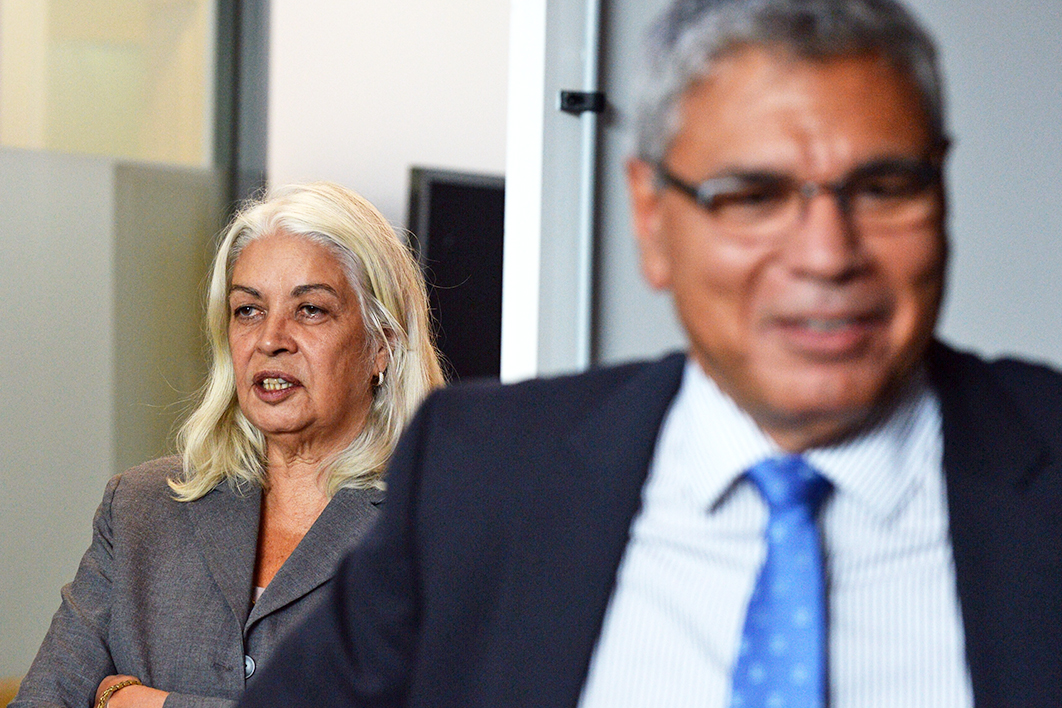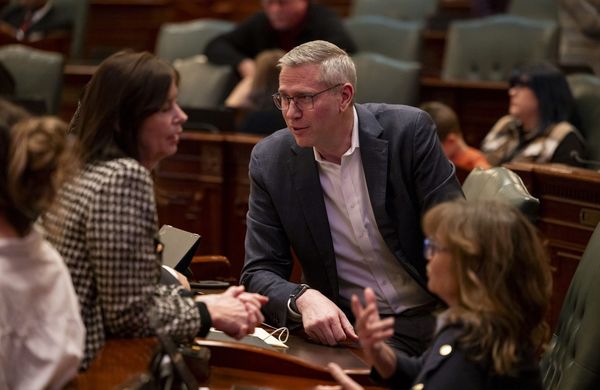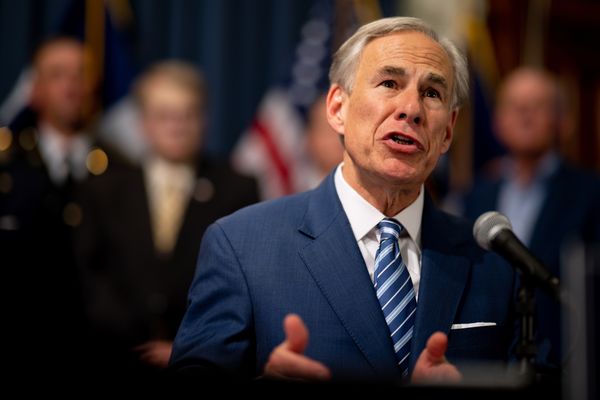
Now that the government has agreed to provide voters with the Voice referendum’s Yes and No cases, the two sets of arguments will need to be written. Assuming ChatGPT isn’t given the job, the all-too-human authors will need to distinguish between two questions: whether provisions for an Indigenous Voice should be added to the Constitution, and whether Australia would benefit from an Indigenous Voice even if it were merely legislated.
Conflating these two questions is easy, and not necessarily illogical. After all, if you think the Indigenous Voice to Parliament is a bad idea then your arguments against it apply to legislating for it as well as mentioning it in the Constitution. Still, the distinction between “We don’t want to alter the Constitution to provide for a Voice” and “We don’t want an Indigenous Voice to Parliament at all” is worth keeping in mind.
There is also a third question — one that the referendum pamphlet(s) will need to avoid. What is the best design for an Indigenous Voice? That isn’t a Yes/No question, and it isn’t the referendum question, but I see little to stop it from becoming, eventually, the question.
The editors of the new book Beyond Belief: Rethinking the Voice to Parliament, Peter Kurti and Nyunggai Warren Mundine, have allowed their contributors — most of whom oppose the Voice — to range over all three of those questions. The strength of this approach to “rethinking” lies in the fact that, even if voters say No to the constitutional amendment, a future government will probably legislate a Voice. If that happens, or if indeed the referendum passes, legislators’ thoughts will be stimulated by some passages in this book.
So we can welcome Warren Mundine’s thoughts on Voice design for their pertinence to a later debate — though he would prefer to have that debate now. His argument for voting No in the referendum seems to be that he can’t be sure that a Yes vote will lead to the kind of Voice he could accept. The extant Voice models — of which Marcia Langton and Tom Calma’s is the best known — strike him as “race-based” because they postulate pan-Aboriginal structures that would override the authority of traditional owners, whom he sees as the only legitimately Indigenous political units.
The book’s more immediate value is in those passages that are pertinent to the more pressing challenge: the referendum. Should we pass the proposed amendment or not? That is the proper topic of the Yes and No pamphlet that will arrive in our mailboxes sometime this year.
Imagine you are responsible for drafting the pamphlet’s No case. Could Beyond Belief help?
Some essays are on point, spelling out why their authors believe an Indigenous Voice in the Constitution could damage our system of government. Economist Henry Ergas expresses this view eruditely, citing political theorists in support of “the bedrock concept of political equality in the Western intellectual tradition,” and particularly “the principle that all citizens should have the same weight in the process of political decision-making.” He believes that a Voice would give a named “national minority” — that is, Indigenous Australians — “special access to the legislative process.”
What’s wrong with that? In Ergas’s view, to institutionalise group representation of that kind suppresses differences of opinion within the group and exaggerates the group’s loyalty to values and identities that (they think) define them. This scenario disturbs Ergas, but others would welcome it as confirming Indigenous peoplehood.
By perpetuating the idea that Indigenous Australians are essentially different from other Australians, Ergas argues, a constitutionally enshrined Voice would fuel demands for “a formal treaty which would make Australia into some type of bi-national state.” Thus, without saying so, he evokes the vision of “Blak Sovereignty.” The Blak Sovereigns — unpredictable, if Lidia Thorpe is their leader — are shaping up to vote No because they see constitutional recognition as threatening their sovereign right to negotiate a treaty. The writer of the No case should strive to give equal weight to Ergas’s and Thorpe’s conflicting reasons for voting No.
Like Ergas, Australian columnist Janet Albrechtsen opposes putting the Voice in the Constitution, but the crux of her argument is that it will change the relationship between the three branches of the state. A combination of High Court litigation over the scope of the Voice and parliament’s obligation to respond to Voice advice will effectively transfer its design from legislators to judges.
As a result, Albrechtsen predicts, the Voice is likely to be more powerful than parliament intends. Those commanding the Voice “will have leverage over the parliament that previously they, and we, never imagined possible.”
Again, we see an argument for No that darkly warns of a scenario many other Australians favour. “All of Australian political life will have to be conducted with one eye on the Voice,” says Albrechtsen. What’s not to like, many will respond. Albrechtsen despairs of such complacency, excoriating the political and corporate elites — blithe sentimentalists racked by colonial guilt — who ignore her risk assessment. The country’s leaders have lost their reason, she believes, and woke elites are bullying business figures and professionals.
Albrechtsen has long been scolding the Yes camp. But the writer of the No case, who would be wise to avoid ad hominem statements, won’t be able to use some of the ammo offered by this columnist.
Former prime minister Tony Abbott is frankly opposed to giving Indigenous Australians more say over the government. He agrees with Albanese that only a “brave” parliament and government would reject the Voice’s advice. If the voters amend the Constitution by adding the words proposed by Albanese, writes Abbott, “there would have to be a Voice; it would have to be listened to; and its powers and functions could be as wide as a parliament might make them.” Well, yes… that’s the idea.
When Abbott explains why he is worried by that scenario, he makes three points. First, Indigenous persons would have two votes, despite there already being a “surfeit of Indigenous consultation mechanisms.” Second, passing legislation would become more difficult. (Amanda Stoker also presents this as a reason for voting No in her essay.) Third, if a government were “brave” (and both Albanese and Abbott imply that governments seldom are), the spurned Indigenous leaders would complain to the High Court that the Constitution was being ignored, further delaying laws and decisions.
Abbott thinks that voters — as horrified as he by these possibilities — will reject the amendment. And this, he warns, will set back reconciliation. He acknowledges that a referendum defeat (and the blow to reconciliation) would be less likely were the Coalition parties to campaign for Yes. This points to one reason why the Liberals might endorse Yes: it isn’t hard to imagine a Liberal MP (Julian Leeser, Andrew Bragg) citing Abbott’s point about reconciliation when urging Dutton to commit to Yes or to allow Liberal MPs a free vote. They probably have already.
The arguments for No presented by Ergas, Albrechtsen and Abbott bear a strong resemblance to many people’s reasons for voting Yes. Competing visions of Australia’s past and future stand in this zone of overlap. A culture war is being fought here — unavoidable and, in my view, necessary.
Abbott is not the only contributor to consider the referendum’s risk to reconciliation; it is also on the mind of Chris Merritt, a former legal affairs editor at the Australian. He speculates that a successful referendum could have a number of unfortunate sequels. Those who voted No because they thought that they didn’t have enough information “could argue that the Voice has been secured by deception — poisoning community relations and bringing the new institution into disrepute.” Those who voted Yes could be unhappy if they find the legislated Voice to be much less powerful than their referendum mandate warranted.
Merritt also mentions the High Court — a body with a poor reputation among contributors to this book. Those who fear for the sovereignty of parliament, Merritt and others argue, will discover that enshrining the Voice in the Constitution has made the High Court — nor parliament — the Voice’s effective designer. The drafter of the No case should tread very carefully here — evoking, without endorsing, the view that the High Court has become a threat to good government.
Another question facing the drafter will be how much weight to give to the argument — made here by Merritt and by lawyer and Sky News pundit Caroline Di Russo — that we don’t yet have enough information to cast a referendum vote. For Merritt, voting No is “the only safe course” if we don’t know what the form and functions of the Voice will be. Di Russo has “yet to form a firm view.”
That cautionary argument for No could lose force if the government can persuade the public that its statements about design principles are meeting the demand for “information.” But it isn’t clear what information would convince Di Russo that “one race should have its own ‘voice’ under the Australian Constitution.”
Several other contributions to this book will be of little use to the drafter of the No case because they do their “rethinking” of the Voice in such a way as to leave readers guessing which way they will vote.
Educational psychologist Anthony Dillon, for example, says he is not definitely a No voter. He wants more information before making up his mind, but he dismisses as “alarmist” the fear that the Voice will “create two Australias.” His concern is that the Voice, by assuming that Indigenous Australians are essentially different from other Australians and essentially similar to each other, will give bad policy advice.
Indigenous Australians are divided, Dillon says. The leaders of the Yes campaign are those who somehow escaped the blight of collective self-determination, grasping education and employment for themselves. He worries that an Indigenous Voice will empower them to entrench a policy paradigm that is failing others. If anyone needs a voice, he says, it is the Indigenous Australians whose violent lives are so different from the Voice’s advocates — hence his openness. He awaits a design of the Voice that would represent those failed by self-determination.
Dillon shares some ground with Jacinta Nampijinpa Price, who argues in her foreword to Beyond Belief that the Voice would empower “a self-serving ‘industry’ that seeks to maintain its relevance.” She predicts that the people who make up this “industry” — “Aboriginal service providers, bureaucrats, academics, and politicians” — won’t be able to correct the failed policies of the past, and the Voice will thus fail to “close the gap.” Instead, the referendum risks constitutionally enshrining the idea that “Aboriginal people are perpetual victims forever in need of special measures.”
Unlike the No-leaning Dillon, Price is emphatically in the No camp. The two of them share the expectation that the Voice will offer bad advice and that governments will take it. Public policy analyst Bernard Samuelson agrees: the Voice will probably express the views of Indigenous Australians whose promotion of self-determination, including “the separatist ‘homeland’ movement,” has already done harm. Former Liberal National senator Amanda Stoker accepts that some “race-based” law, such as native title, is necessary but argues that we shouldn’t put the Voice in the Constitution because we don’t know whether it will improve “life outcomes.”
Scott Prasser’s essay — a Pol Sci 101 primer — assures readers that to vote No is socially acceptable, part of a proud Australian tradition of referendum negation. Witness, he says, Bert Evatt in 1951. What may distinguish this referendum, he fears, is the “opprobrium” attaching to No. That the No case may want for champions is underlined by his own essay’s exemplary reticence.
Like Dillon, Stoker criticises the referendum question for assuming that all Indigenous Australians think alike. Like Mundine, she insists that we keep in mind those Indigenous Australians who don’t want to be recognised in the Constitution — or, if they do, don’t want recognition in the form of the Voice. One argument that the No case could advance would be expressed as a question: how can we be sure that this amendment to the Constitution will be an act of constitutional recognition that Indigenous Australians accept? What the “recognised” think, after the vote on the principle, is decisive here.
Perhaps without realising it, Stoker has touched on a confirmatory political step acknowledged by Voice advocates. They want the referendum, if successful, to be followed by consultations with Indigenous Australians to confirm that the Voice — as outlined in a draft bill — is the form that constitutional recognition should take. The recommended assemblies will take place in 2024, seven years after those that culminated at Uluru. How do we know, the No case might ask, that the recognised will confirm the Voice — that is, the model that a government is then prepared to legislate — as the form that constitutional recognition should take?
At this point questions of Voice design will be central. The debate over constitutional recognition since 2012 has encouraged the expression of Indigenous diversity and promoted non-Indigenous interest in it. Dissenting Indigenous opinion will probably be conspicuous in the post-referendum consultations promised by the Albanese government. Equally likely is that such post-referendum assemblies will reiterate the Uluru Statement’s demand for a Voice, tweaking and endorsing the model offered by the government and looking ahead to truth-telling and work on a treaty. But we ain’t there yet. •
Beyond Belief: Rethinking the Voice to Parliament
Edited by Peter Kurti and Nyunggai Warren Mundine | Connor Court | $29.95 | 240 pages
The post Where No meets Yes appeared first on Inside Story.







